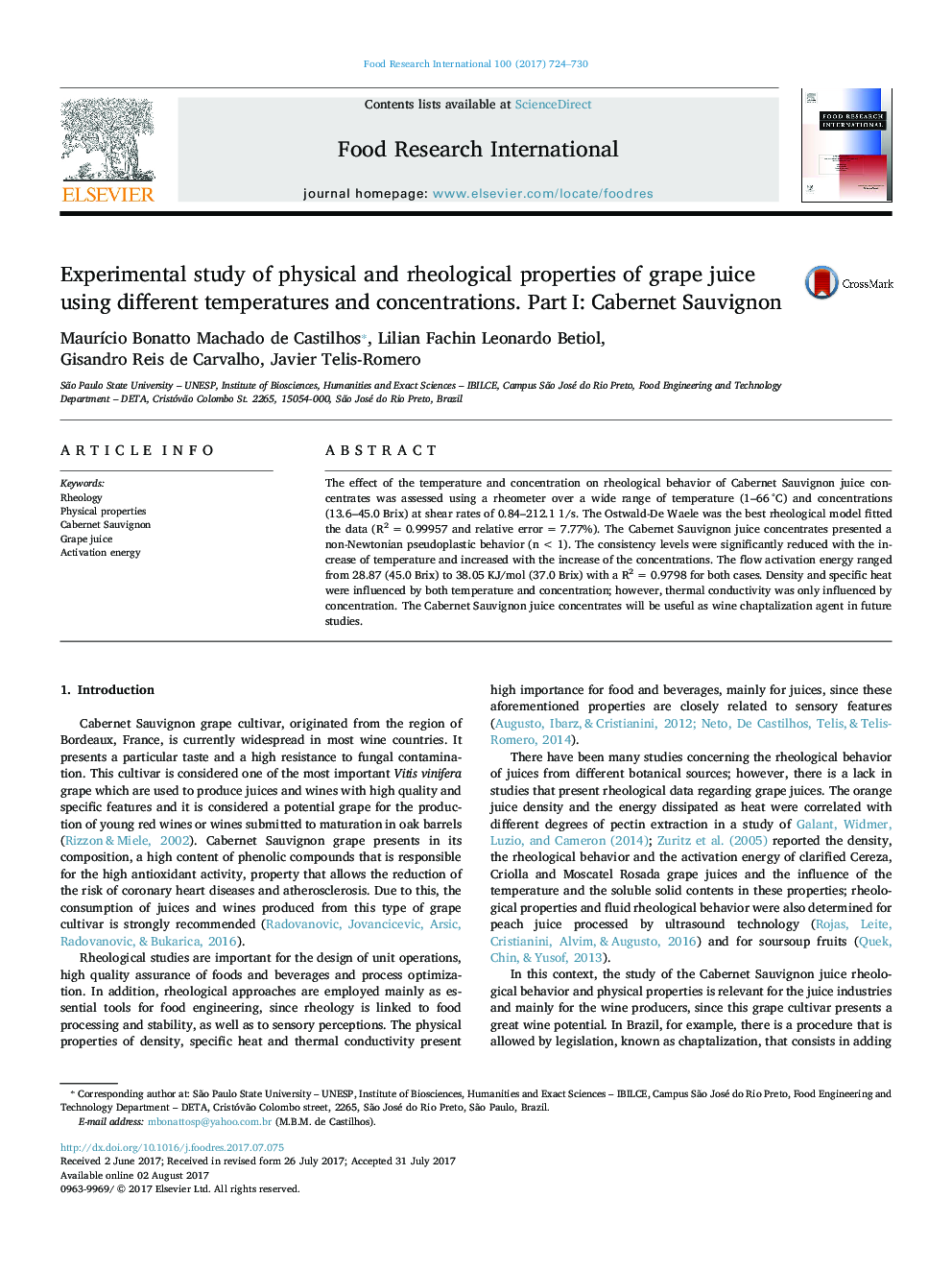| Article ID | Journal | Published Year | Pages | File Type |
|---|---|---|---|---|
| 5768027 | Food Research International | 2017 | 7 Pages |
â¢Rheological behavior of Cabernet Sauvignon juices was analyzed.â¢The grape concentrates followed Ostwald-De Waele law and pseudoplastic behavior.â¢Density and specific heat were influenced by temperature and concentration.â¢Thermal conductivity was influenced only by the different concentrations.
The effect of the temperature and concentration on rheological behavior of Cabernet Sauvignon juice concentrates was assessed using a rheometer over a wide range of temperature (1-66 °C) and concentrations (13.6-45.0 Brix) at shear rates of 0.84-212.1 1/s. The Ostwald-De Waele was the best rheological model fitted the data (R2 = 0.99957 and relative error = 7.77%). The Cabernet Sauvignon juice concentrates presented a non-Newtonian pseudoplastic behavior (n < 1). The consistency levels were significantly reduced with the increase of temperature and increased with the increase of the concentrations. The flow activation energy ranged from 28.87 (45.0 Brix) to 38.05 KJ/mol (37.0 Brix) with a R2 = 0.9798 for both cases. Density and specific heat were influenced by both temperature and concentration; however, thermal conductivity was only influenced by concentration. The Cabernet Sauvignon juice concentrates will be useful as wine chaptalization agent in future studies.
Graphical abstractDownload high-res image (128KB)Download full-size image
